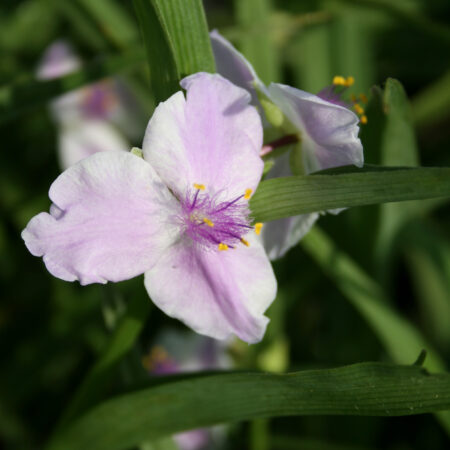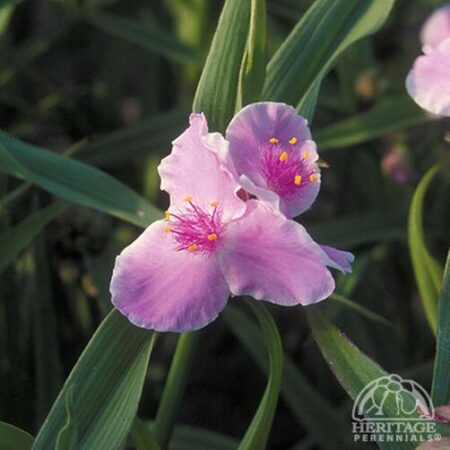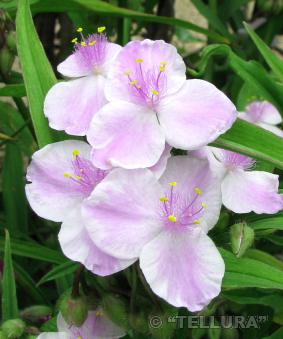Details
| Full name | Tradescantia (Andersoniana Group) ‘Pink Chablis’. |
| Name status | Accepted, the valid name for a unique cultivar. Established with a description by Marco van Noort Vaste Planten V.O.F. (2005). Because it is a legal protection registration, the name is accepted permanently over any other (Brickell et al., 2016, Arts. 11.3, 11.4). |
| Origins | Unknown seedling, selected by Marcus Wilhelmus Gerardus van Noort in Warmond, the Netherlands in 1999 (van Noort, 2005). |
| Classification | Like other hardy garden hybrids, it is now placed in the Andersoniana Group. These hybrids are sometimes mislabelled as Tradescantia virginiana or the invalid botanical hybrid Tradescantia × andersoniana. |
| Legal protection | Patented in the USA (van Noort, 2005). Previously registered for plant breeder’s rights in Europe, but surrendered in 2009 (Marco van Noort Vaste Planten V.O.F., 2005). |
| Availability | Available from many nurseries. |
Description
Described by van Noort (2005), with reference to the RHS Colour Chart (4th edition).
| Cultivar group | Tradescantia Andersoniana Group. |
| Growth habit | Upright and spreading habit, moderately vigorous. 30cm high x 61cm spread. |
| Foliage | Stems are smooth and hairless, about 6mm wide, strong yellow green (143A to 143B). Leaves are about 18.9cm long and 1.8cm wide, smooth except for sparse hairs along the margin. Upper surfaces are strong yellow green (143A to 144A), undersides are moderate yellow green (138B). |
| Flowers | Flower stalks are about 1.6cm long and 1mm wide, moderate reddish brown (177A). Buds are about 1cm long and 6mm wide, strong yellow green (144B to 144C). Sepals are about 1.1cm long and 4mm across. Inside and outside surfaces are smooth and hairless, strong yellow green (144B to 144C). Flowers are about 2.6cm across. Petals are fan-shaped with undulating margins. When first opening, petals are strong reddish purple (72C) inside and deep purplish pink (72D) outside. When fully open, insides are deep purplish pink (73A), with the edges becoming light purplish pink (73C) or yellowish white (155D). When fully open, outsides are strong purplish pink (73B), with the edges becoming light purplish pink (73C) or yellowish white (155D). Stamen filaments and style are deep purplish pink (72D to 73A). Anthers are vivid yellow (14A to 14B). Sitgma is greenish white (157D). |
| Comparisons | Compared to Tradescantia (Andersoniana Group) ‘Sweet Kate’, it is shorter, with darker foliage and pink flowers. |
References
Royal Horticultural Society. (2003). RHS Plant Finder 2003.
Marco van Noort Vaste Planten V.O.F. (2005). Tradescantia ‘Pink Chablis’ [EU plant breeder’s rights registration 15729]. Community Plant Variety Office. Registration document link.
van Noort, M. W. G. (2005). Tradescantia plant named ‘Pink Chablis’ [US plant patent PP15,971 P2]. United States Patent and Trademark Office. Internet Archive link.
Brickell, C. D., Alexander, C., Cubey, J. J., David, J. C., Hoffman, M. H. A., Leslie, A. C., Malécot, V., Jin, X. (2016). International Code of Nomenclature for Cultivated Plants. PDF link.



